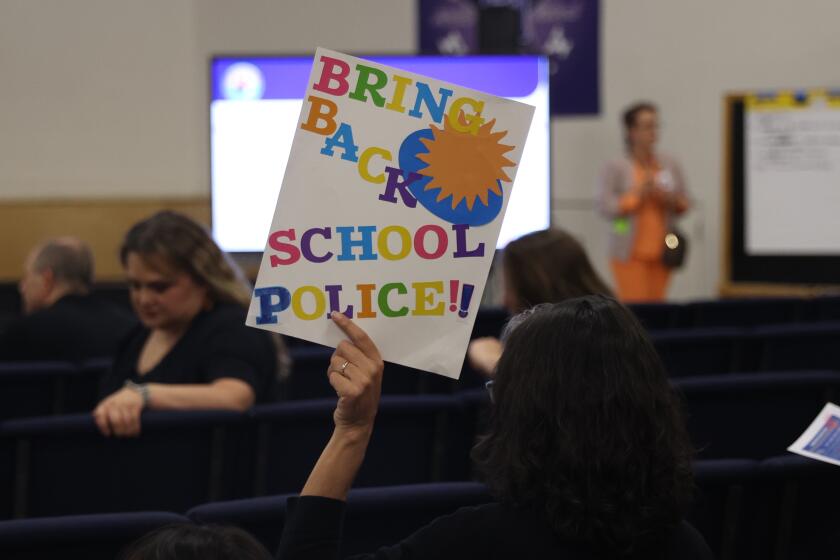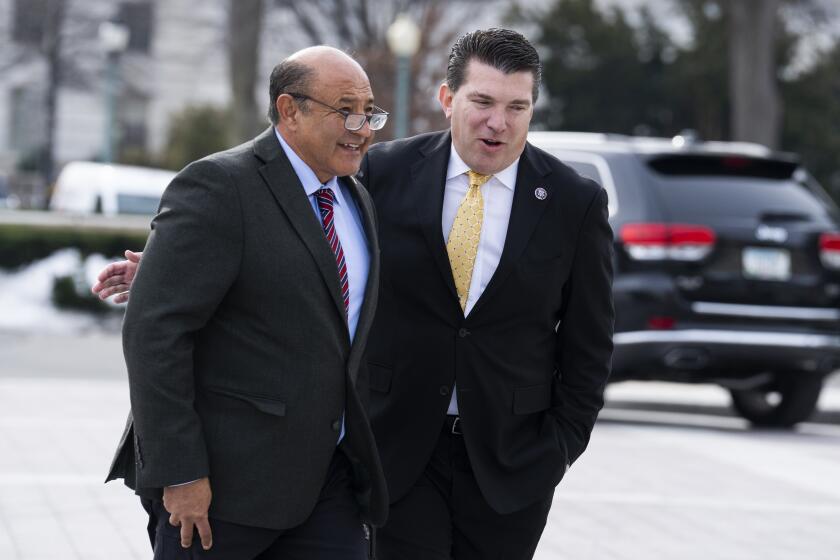State Ups the Ante to Lure Fusion Project : Energy: California offers $4 million in its attempt to attract international research team designing nuclear reactor to San Diego.
California has sharply increased its bid to $4 million for a six-year international fusion research project, putting San Diego in competition with Japan and Germany to design a state-of-the-art nuclear fusion reactor.
“California has lost some previous projects, and we were determined to put our best foot forward to get this project,” said James Lee, a spokesman for Gov. Pete Wilson.
The governor’s office announced the increase Thursday.
The state had originally committed $400,000 to the International Thermonuclear Experimental Reactor, but upped the ante in hopes that San Diego will someday become home of a machine that would produce energy from nuclear fusion, the same energy-producing force evident in the sun and other stars.
But, for now, the state is vying to become the home of the scientists and engineers who will develop and design that machine and will commit $4 million for equipment and office space for the $1.2-billion design phase of the project.
San Diego business leaders are working to raise another $1 million to make San Diego more attractive to a consortium of countries negotiating the deal, made up of European countries, the Soviet Union, the United States and Japan.
The consortium is expected to make a decision on where the reactor will be designed in late May or early June.
“This is the opportunity for San Diego to emerge as another Silicon Valley, if you will,” said Joanne Pastula, executive vice president of John Burnham & Co., the company spearheading the city’s fund raising. “We want to make sure that, whenever there’s an opportunity for an attractive project, everybody gets on the bandwagon.
“This would establish San Diego as an international research area of significant importance.”
David Overskei, senior vice president with San Diego-based General Atomics, the second-largest fusion research company in the United States, said San Diego is the best place to design the reactor and eventually build it.
“The United States is based on cultural diversity,” Overskei said. “Anyone from any culture or background will feel comfortable here. Secondly, English is common as a second language, unlike German or Japanese. . . . Thirdly, the basic quality of life. Southern California is a pleasant place to live.”
Overskei said San Diego is the logical place to design the nuclear fusion reactor because laboratory space is readily available on Torrey Pines Mesa, next to UC San Diego.
Japan and Germany have proposed to build new facilities for the scientists, he said. “We have a distinct advantage, because we have buildings immediately available near UCSD,” Overskei said. “And there is a significant availability of housing here. . . . They’ll have to build, (housing and office space), but we won’t have to.”
Overskei said General Atomics, which has a contract with the Department of Energy, as well as the University of California system have scientists who would help research the new fusion reactor.
“We would work together on this project,” Overskei said. “This would end up being a gathering of the best fusion scientists throughout the world.”
Fusion is a process in which two atoms are fused together, while fission, now in use, is a process in which a single atom is split, releasing its energy.
Fusion is billed as the safer and more environmentally friendly of the two processes.
“With fission, you need uranium or plutonium, which is an exhaustable fuel,” Lee said. “With a fusion reactor, hydrogen elements are readily available in ordinary sea water. In order for a fusion reactor to work, you have to keep the fusion reaction in a suspended state. . . . It’s fail-safe. If anything happens to the reactor, it shuts itself down.”
The principal existing problem with fusion is that more energy must be put into the reactor than it actually produces, Lee said.
But the fusion reactor to be designed, possibly in San Diego, would be commercially feasible, because it is expected to give back as much energy as was put in, Lee said.
More to Read
Start your day right
Sign up for Essential California for news, features and recommendations from the L.A. Times and beyond in your inbox six days a week.
You may occasionally receive promotional content from the Los Angeles Times.






